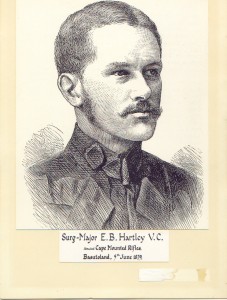Surgeon who braved hail of bullets
One of the bravest doctors to walk the wards of St George’s Hospital was Edmund Barron Hartley who won the Victoria Cross at the turn of the 18th century.
An account of his bravery is recorded in the Army Medical Services Museum, Aldershot, which is dedicated to the memory of physicians, nurses and orderlies who have served in the military.
Harley originally worked as a clerk for the Inland Revenue before following in his father’s footsteps and retraining as a doctor in south London.
He qualified in 1874 but yearned for adventure and travelled to South Africa at a time when the Zulus were being stirred into action by the colonial incursions of the British and Dutch.
Hartley was the first English physician to work in Basutoland and spent three years as district surgeon before volunteering to join the Cape Mounted Rifles where he eventually rose to the rank of Surgeon Major.
The rifles had been set up to maintain law and order and had clashed several times with a local tribal chief called Morosi. He refused all attempts to surrender and retreated to a heavily fortified mountain stronghold with more than 1,500 men.
The British failed to storm the mountain several times with the support of artillery and rockets and an attempt to starve the defenders out failed when cattle were driven up the mountain providing a ready supply of meat and milk.
Three months later, a reinforcement of troops nervously prepared for a dawn assault up the mountain’s steep rock strewn slopes.
The Zulus poured fire down on the advancing soldiers throughout the day leaving a small group trapped and wounded behind a ledge of rock.
Hartley sprang into action carrying a wounded corporal back on his shoulders under heavy fire. He left the injured man with waiting stretcher bearers before re-crossing 150 yards of open ground to soldiers’ cheers to tend to the remaining wounded.
His commanding officer Major Grant said: “I saw him attending the wounded under withering fire and all ranks were loud and enthusiastic in praise of Dr Hartley’s extreme gallantry.”
Hartley was mentioned in dispatches a further four times in his career seeing action in the Bechuanaland Rebellion, where he was wounded treating injured soldiers, and the Boer War.
Edmund Hartley died in 1918.
His medals, which are now on display in Army Medical Museum, include the Victoria Cross, the Queen’s and King’s South Africa War Medals with clasps, the Commander of the Order of St Michael and St George and the Knight of St John.


